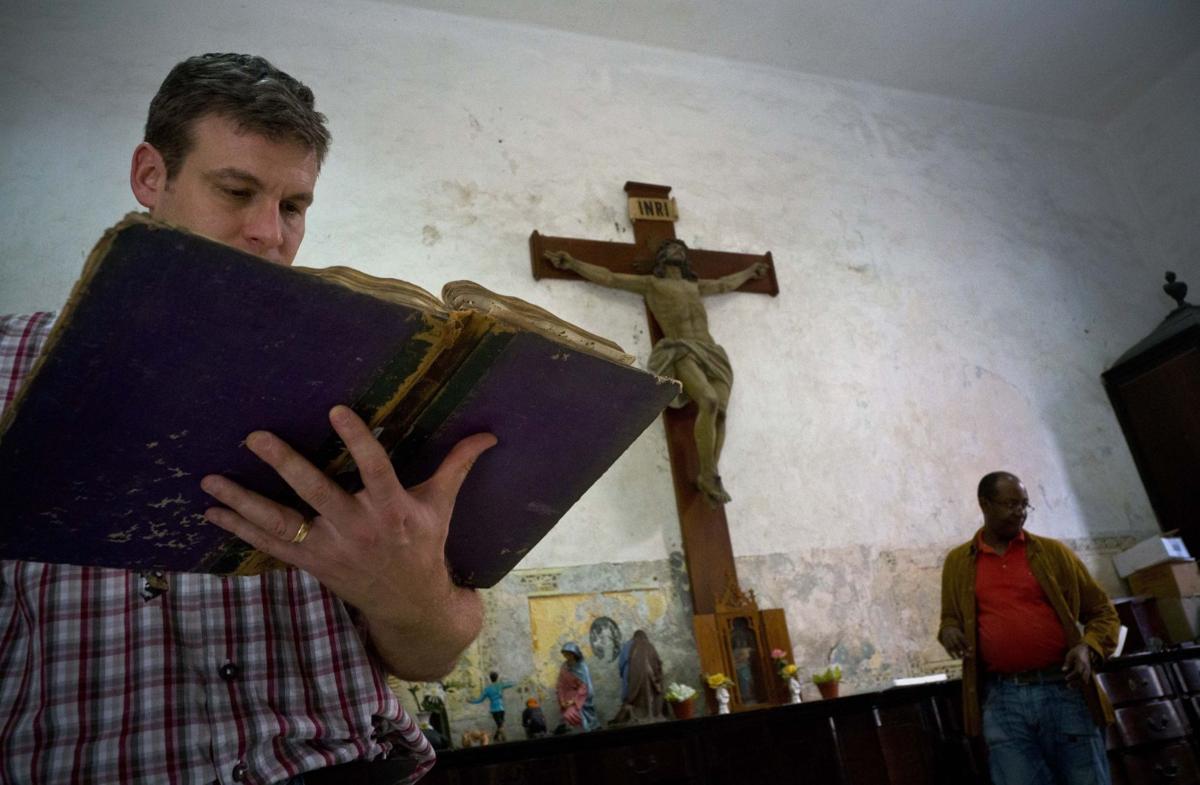Haiti in the Hispanophone Caribbean Literary Imaginary | Small Axe Project
In his now-classic study Silencing the Past: Power and the Production of History (1995), Michel-Rolph Trouillot writes about the deliberate act of silencing as “an erasure more effective than the absence or failure of memory, whether faked or genuine.”1 For Trouillot, the marginalization of Haiti in historical studies written throughout the western hemisphere prompts an examination of the construction of scholarship itself. Almost two decades after the publication of Trouillot’s text, Myriam J. A. Chancy addresses directly academics in the fields of American, Latin American, and Caribbean studies for their disciplinary exclusion of Haiti in her analysis From Sugar to Revolution: Women’s Visions of Haiti, Cuba, and the Dominican Republic (2012). “The silence cloaking Haiti’s role in the universal or ‘world’ playground of modern history,” she writes, “is more profound than merely an absence occasioned by the process of historicization; it is a deliberate, even violent occlusion.”2 The words of these scholars, particularly those of Chancy, prompted a reexamination not only of my own training as a scholar but of the work I have produced to this point.
When writing about Haiti, it is inevitable that we begin with the Revolution; although Saint-Domingue played a critical role in the community of Caribbean colonies, primarily for being the economic powerhouse in the region, it is as an independent nation—as Ayiti—that the country cast its greatest light on the region. Even today, as a predominant narrative continues to emphasize the poverty of the country, as the international community seemingly wills the nation to simply accept the devastating effects of an earthquake as yet another example of the suffering of Haitian people (all the while feasting on profits amounting to billions of dollars), the metaphorical strength, the inspiration of the Revolution, still stands. Indeed, the chronicle of impoverishment manages to counterbalance a feat that no other enslaved peoples in the hemisphere managed to achieve: a complete overthrow of the standing governing powers. We conveniently ignore the fact that no other such revolution came to be in this hemisphere because colonial powers worked diligently, through campaigns of terror, to prevent a similar occurrence. It is not that the enslaved and their descendants in other regions were not as organized or intelligent as their Haitian brethren; leaders of potential uprisings, those suspected of having anything to do with insurrection, were killed. In fact, they were often tortured publicly, then murdered.
The history of resistance and insurrection on the part of women and men of African descent is woefully understudied in the Hispanic Caribbean, where instead there is emphasis on nationalist movements led by men of Spanish heritage. The prominence of Hispanophile pedagogies in curriculums across the region allows for the effective marginalization and successful erasure of populations of African heritage from the national imaginaries of Cuba, Puerto Rico, and the Dominican Republic. The version of “Spain” that has been taught traditionally, and that continues to be taught, is one that treats a seven-century-long Arabic Muslim North African and Middle Eastern presence on the peninsula as incidental. It is the conquest and ejection of the supposed “Moors” that united the Spanish nation in 1492, not the incorporation of these generations of men and women from neighboring countries into the towns dotting the Iberian countryside. There is no mestizaje in traditional understandings of the Mother Country. It is this homogenous (read, white European) Spain that has been presented as the progenitor of the Hispanic Caribbean. And while there have been various artistic and political movements rendering men and women of African descent as integral parts of these island nations, they have been met with limited success. Even Communist Cuba, with its storied commitment to ending racism during the Revolution of 1959, has recently begun to reexamine the strategies employed to meet a goal that involved changing a consciousness steeped in Hispanophile leanings, even decades after the break from Spain. This after a reluctant recognition that antiblack racism remains a systemic problem.3
The most prominent work produced in the Hispanic Caribbean to feature Haiti is Alejo Carpentier’s El reino de este mundo (1949), a much-examined depiction of the Haitian Revolution through the lens of lo real maravilloso, or the marvelous real, the term that Carpentier introduces in his prologue and that is often theorized as a related precursor to magical realism. Indeed, Carpentier’s novel suggests that the Revolution, born as per his telling in a religious ceremony, reveals the true nature of the larger Caribbean, a region that not only includes peoples of indigenous and African heritage but must necessarily embrace those marginalized cultures. Carpentier’s novel followed a 1943 trip to the country, when, as critic Emilio Jorge Rodríguez reminds us, Carpentier not only visited the Citadelle Laferrière and the Sans-Souci Palace but also gave a lecture in Port-au-Prince that appeared first in local publications and later in Martinique’s Tropiques.4 His contact with Haitian intellectuals would continue in subsequent years, and in 1951, he published an article noting the need to take into account the Haitian novel when writing about the literature of the region; few, to this point, have followed his counsel.
This discussion section therefore simultaneously serves two purposes: First, it is a small example of the possible work that can be produced in this woefully understudied area. Second, it is an opportunity to examine our own hegemonic renderings of antiblackness. What is our role as scholars in reproducing, often unconsciously, our graduate training, without examination? When do we, as producers of knowledge, take stock in order to scrutinize the possible contributions we ourselves make to a collective imaginary that replicates flat, one-dimensional representations of this nation? When do we, as humanities scholars in particular, who are in the business of analysis, come to understand our role in contributing to a narrative invested in perpetuating the suffering of a people seemingly forced to atone to neocolonial overseers for the actions of their ancestors? Or do we, as scholars of the (Hispanic) Caribbean, simply maintain the status quo of antiblack, white supremacist ideologies by repeating that Haiti has nothing to do with us? Do we replicate our own colonial legacies by assuming the stance of the colonizers, comfortable in our isolation from the rest of the region, even if “we” happen to share an island with “them”?
US Latinx and Latin American studies remain disciplines uncomfortable with explicit discussions about race. Some assert that anything to do with race (read, blackness, because race is always conflated to mean blackness) is a byproduct of the influence of the United States, that “we” don’t have such issues back “home,” never mind that for a good number of us home is here, on this mainland. Never mind that all of our nations (Cuba, Puerto Rico, and the Dominican Republic, in particular) not only were home to millions of Africans and their descendants in times of slavery (a pesky inconvenience for some of “us”) but remain home to millions of their progenies. If you believe neoliberal tracts about history, you believe that globalization is a recent economic phenomenon that has grown in strength over the last century. As writers and scholars of Caribbean history and literature, we know better; those of us who study the beginnings of the American (in the hemispheric sense) enterprise know it all too well, given that the Genovese mariner sailed under a Spanish flag in search of new trade routes. Given this, a careful consideration of the impact of Haiti and the invocation of the country in the cultural productions of neighboring Spanish-speaking countries is long overdue.
Haiti—the country and its people—deserves more complex, more profound renderings not only of its historical past but also of its present and future. Haitian American anthropologist and artist Gina Athena Ulysse plainly offers her reasons for this fact in her most recent work, Why Haiti Needs New Narratives: A Post-quake Chronicle (2015). Recognizing that narratives are fundamentally dialogic, that is, they are not produced in a vacuum but instead in conversation, we understand that the creation of innovative chronicles must necessarily occur throughout the hemisphere, in terms of cultural production and in our scholarship; to that end, it is our pleasure to offer the following essays. In advance of his forthcoming book, American Imperialism’s Undead: The US Occupation of Haiti and the Rise of Caribbean Anticolonialism, to be published this fall, Raphael Dalleo convincingly persuades us to consider Cuban and Puerto Rican newspaper coverage of Haiti in the first decades of the twentieth century, particularly that which coincided with the nineteen-year US military occupation of Haiti, from 1915 to 1934. Marc Olivier Reid examines a little-known novel by Ecuadorean writer Gerardo Gallegos, Beau Dondón conquista un mundo (1942), written during the author’s decades-long residence in Cuba. For her part, Mariana Past analyzes a celebrated short story by Puerto Rican writer Ana Lydia Vega, “Encancaranublado” (1982), underscoring the rhetorical power of the Haitian-made boat in a story about migrants fleeing from the islands of Cuba and Hispaniola. Finally, Erika Serrato studies the poetry of Afro-Cuban poet Jesús Cos Causse, emphasizing his inclusion of Haitian writer Jacques Roumain in his oeuvre.
This discussion brings forth new possibilities for the field of Hispanic Caribbean literary studies; it is our hope that it may inspire more work in the area.
Vanessa K. Valdés is an associate professor of Spanish and Portuguese at the City College of New York–CUNY. Her research interests include comparative studies of the literatures of the Americas. She is the editor of The Future Is Now: A New Look at African Diaspora Studies (2012) and Let Spirit Speak! Cultural Journeys through the African Diaspora (2012). She is the author of Oshun’s Daughters: The Search for Womanhood in the Americas (2014) and is book review editor of sx salon
In his now-classic study Silencing the Past: Power and the Production of History (1995), Michel-Rolph Trouillot writes about the deliberate act of silencing as “an erasure more effective than the absence or failure of memory, whether faked or genuine.”1 For Trouillot, the marginalization of Haiti in historical studies written throughout the western hemisphere prompts an examination of the construction of scholarship itself. Almost two decades after the publication of Trouillot’s text, Myriam J. A. Chancy addresses directly academics in the fields of American, Latin American, and Caribbean studies for their disciplinary exclusion of Haiti in her analysis From Sugar to Revolution: Women’s Visions of Haiti, Cuba, and the Dominican Republic (2012). “The silence cloaking Haiti’s role in the universal or ‘world’ playground of modern history,” she writes, “is more profound than merely an absence occasioned by the process of historicization; it is a deliberate, even violent occlusion.”2 The words of these scholars, particularly those of Chancy, prompted a reexamination not only of my own training as a scholar but of the work I have produced to this point.
When writing about Haiti, it is inevitable that we begin with the Revolution; although Saint-Domingue played a critical role in the community of Caribbean colonies, primarily for being the economic powerhouse in the region, it is as an independent nation—as Ayiti—that the country cast its greatest light on the region. Even today, as a predominant narrative continues to emphasize the poverty of the country, as the international community seemingly wills the nation to simply accept the devastating effects of an earthquake as yet another example of the suffering of Haitian people (all the while feasting on profits amounting to billions of dollars), the metaphorical strength, the inspiration of the Revolution, still stands. Indeed, the chronicle of impoverishment manages to counterbalance a feat that no other enslaved peoples in the hemisphere managed to achieve: a complete overthrow of the standing governing powers. We conveniently ignore the fact that no other such revolution came to be in this hemisphere because colonial powers worked diligently, through campaigns of terror, to prevent a similar occurrence. It is not that the enslaved and their descendants in other regions were not as organized or intelligent as their Haitian brethren; leaders of potential uprisings, those suspected of having anything to do with insurrection, were killed. In fact, they were often tortured publicly, then murdered.
The history of resistance and insurrection on the part of women and men of African descent is woefully understudied in the Hispanic Caribbean, where instead there is emphasis on nationalist movements led by men of Spanish heritage. The prominence of Hispanophile pedagogies in curriculums across the region allows for the effective marginalization and successful erasure of populations of African heritage from the national imaginaries of Cuba, Puerto Rico, and the Dominican Republic. The version of “Spain” that has been taught traditionally, and that continues to be taught, is one that treats a seven-century-long Arabic Muslim North African and Middle Eastern presence on the peninsula as incidental. It is the conquest and ejection of the supposed “Moors” that united the Spanish nation in 1492, not the incorporation of these generations of men and women from neighboring countries into the towns dotting the Iberian countryside. There is no mestizaje in traditional understandings of the Mother Country. It is this homogenous (read, white European) Spain that has been presented as the progenitor of the Hispanic Caribbean. And while there have been various artistic and political movements rendering men and women of African descent as integral parts of these island nations, they have been met with limited success. Even Communist Cuba, with its storied commitment to ending racism during the Revolution of 1959, has recently begun to reexamine the strategies employed to meet a goal that involved changing a consciousness steeped in Hispanophile leanings, even decades after the break from Spain. This after a reluctant recognition that antiblack racism remains a systemic problem.3
The most prominent work produced in the Hispanic Caribbean to feature Haiti is Alejo Carpentier’s El reino de este mundo (1949), a much-examined depiction of the Haitian Revolution through the lens of lo real maravilloso, or the marvelous real, the term that Carpentier introduces in his prologue and that is often theorized as a related precursor to magical realism. Indeed, Carpentier’s novel suggests that the Revolution, born as per his telling in a religious ceremony, reveals the true nature of the larger Caribbean, a region that not only includes peoples of indigenous and African heritage but must necessarily embrace those marginalized cultures. Carpentier’s novel followed a 1943 trip to the country, when, as critic Emilio Jorge Rodríguez reminds us, Carpentier not only visited the Citadelle Laferrière and the Sans-Souci Palace but also gave a lecture in Port-au-Prince that appeared first in local publications and later in Martinique’s Tropiques.4 His contact with Haitian intellectuals would continue in subsequent years, and in 1951, he published an article noting the need to take into account the Haitian novel when writing about the literature of the region; few, to this point, have followed his counsel.
This discussion section therefore simultaneously serves two purposes: First, it is a small example of the possible work that can be produced in this woefully understudied area. Second, it is an opportunity to examine our own hegemonic renderings of antiblackness. What is our role as scholars in reproducing, often unconsciously, our graduate training, without examination? When do we, as producers of knowledge, take stock in order to scrutinize the possible contributions we ourselves make to a collective imaginary that replicates flat, one-dimensional representations of this nation? When do we, as humanities scholars in particular, who are in the business of analysis, come to understand our role in contributing to a narrative invested in perpetuating the suffering of a people seemingly forced to atone to neocolonial overseers for the actions of their ancestors? Or do we, as scholars of the (Hispanic) Caribbean, simply maintain the status quo of antiblack, white supremacist ideologies by repeating that Haiti has nothing to do with us? Do we replicate our own colonial legacies by assuming the stance of the colonizers, comfortable in our isolation from the rest of the region, even if “we” happen to share an island with “them”?
US Latinx and Latin American studies remain disciplines uncomfortable with explicit discussions about race. Some assert that anything to do with race (read, blackness, because race is always conflated to mean blackness) is a byproduct of the influence of the United States, that “we” don’t have such issues back “home,” never mind that for a good number of us home is here, on this mainland. Never mind that all of our nations (Cuba, Puerto Rico, and the Dominican Republic, in particular) not only were home to millions of Africans and their descendants in times of slavery (a pesky inconvenience for some of “us”) but remain home to millions of their progenies. If you believe neoliberal tracts about history, you believe that globalization is a recent economic phenomenon that has grown in strength over the last century. As writers and scholars of Caribbean history and literature, we know better; those of us who study the beginnings of the American (in the hemispheric sense) enterprise know it all too well, given that the Genovese mariner sailed under a Spanish flag in search of new trade routes. Given this, a careful consideration of the impact of Haiti and the invocation of the country in the cultural productions of neighboring Spanish-speaking countries is long overdue.
Haiti—the country and its people—deserves more complex, more profound renderings not only of its historical past but also of its present and future. Haitian American anthropologist and artist Gina Athena Ulysse plainly offers her reasons for this fact in her most recent work, Why Haiti Needs New Narratives: A Post-quake Chronicle (2015). Recognizing that narratives are fundamentally dialogic, that is, they are not produced in a vacuum but instead in conversation, we understand that the creation of innovative chronicles must necessarily occur throughout the hemisphere, in terms of cultural production and in our scholarship; to that end, it is our pleasure to offer the following essays. In advance of his forthcoming book, American Imperialism’s Undead: The US Occupation of Haiti and the Rise of Caribbean Anticolonialism, to be published this fall, Raphael Dalleo convincingly persuades us to consider Cuban and Puerto Rican newspaper coverage of Haiti in the first decades of the twentieth century, particularly that which coincided with the nineteen-year US military occupation of Haiti, from 1915 to 1934. Marc Olivier Reid examines a little-known novel by Ecuadorean writer Gerardo Gallegos, Beau Dondón conquista un mundo (1942), written during the author’s decades-long residence in Cuba. For her part, Mariana Past analyzes a celebrated short story by Puerto Rican writer Ana Lydia Vega, “Encancaranublado” (1982), underscoring the rhetorical power of the Haitian-made boat in a story about migrants fleeing from the islands of Cuba and Hispaniola. Finally, Erika Serrato studies the poetry of Afro-Cuban poet Jesús Cos Causse, emphasizing his inclusion of Haitian writer Jacques Roumain in his oeuvre.
This discussion brings forth new possibilities for the field of Hispanic Caribbean literary studies; it is our hope that it may inspire more work in the area.
Vanessa K. Valdés is an associate professor of Spanish and Portuguese at the City College of New York–CUNY. Her research interests include comparative studies of the literatures of the Americas. She is the editor of The Future Is Now: A New Look at African Diaspora Studies (2012) and Let Spirit Speak! Cultural Journeys through the African Diaspora (2012). She is the author of Oshun’s Daughters: The Search for Womanhood in the Americas (2014) and is book review editor of sx salon





























 I wonder if anything will be accidnetly "destroyed"
I wonder if anything will be accidnetly "destroyed"




